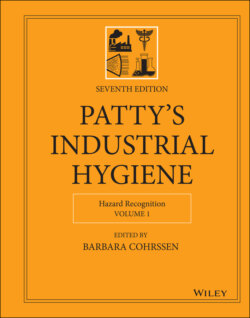Читать книгу Patty's Industrial Hygiene, Hazard Recognition - Группа авторов - Страница 19
2.4 1950s: The Growth of Employment of Industrial Hygienists in General Industry
ОглавлениеThe 1950s saw the increasing development of industrial hygiene programs within industry, particularly in large organizations. It was a time of growing concern about public and occupational health due to the noted increasing rates of cancer in the US populations. In 1953 in the United Kingdom, Doll published the first epidemiology study of the alarming increase in the rate of deaths from lung cancer. Several suspected causative factors were considered, and the result was a direct correlation between lung cancer and the smoking of cigarettes (37).
The first AIHA technical committees (air pollution, analytical chemistry, noise, and radiation) were formed, indicative of the broadening purview at that time of industrial hygiene to include environmental affairs as well as health physics.
Increased development of exposure standards in the 1950s continued to propel the profession. In 1951, the Walsh–Healey Public Contracts Act was expanded to include Safety and Health Standards that recommended a list of 29 ACGIH TLVs, to be used “as a guide for allowable concentrations.” This was the first specific Federal regulatory standard that expanded upon the generic requirements (for ventilation and respirators where appropriate) contained within the Basic Safety and Health Requirements added in 1942 to the original Walsh–Healey Public Contracts Act of 1936 (38). Outside of the United States, the profession also grew in developed countries. In the United Kingdom, the British Occupational Hygiene Society (BOHS) was founded in 1953.
In 1958, the AIHA published Hygienic Guides that included standards for 56 substances (39). This was the first time that the documented rationale behind the list of numerical TLVs exposure standards was widely published.
